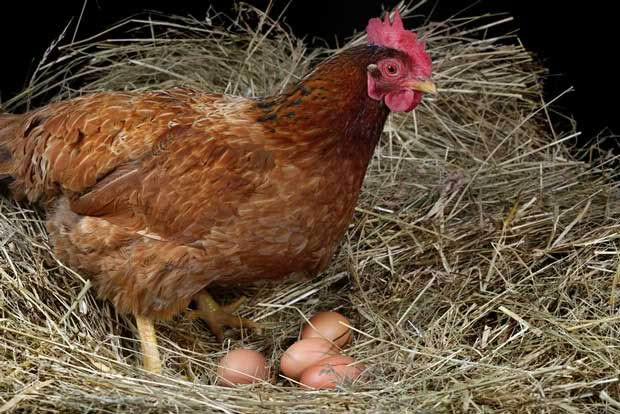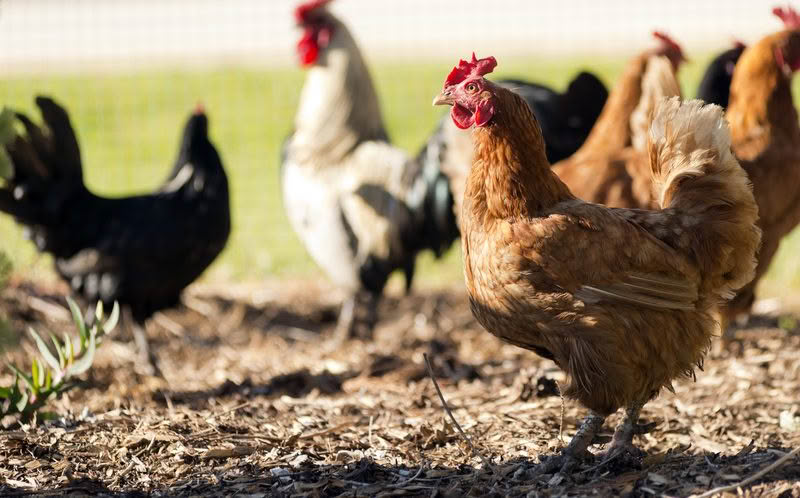Signs of a healthy hen
Words: Nadene Hall
If you buy day-old, commercially-bred hybrid chicks from a hatchery they will have been vaccinated against two major killers of free-range poultry: Marek’s disease and salmonella.
If you buy professionally-reared commercial hens at point of lay they may also be vaccinated against several more common diseases, like Infectious Bronchitis (IB). When companies are selling birds in large numbers, it is economically viable for them to buy and administer the relevant vaccines. By contrast, purebred birds will not have been vaccinated as most vaccines only come in 1000 dose vials that must be stored in liquid nitrogen, and used within a short time period, and it’s not worth it for an amateur breeder to do this.
While young birds bred by amateur poultry enthusiasts will probably have been exposed to a variety of infections and have gained some immunity, once they get to your place they may succumb to parasites or infections that they have not been exposed to before, become sick and/or die. New birds should always be quarantined for up to 10 days from your main flock for this reason, or – if you want to be very careful – run as a separate flock throughout their lives. Obviously, this may not be possible or practical if you only have a few birds, in which case you take a risk when you add new birds into your flock.
Most vets do not specialise in poultry problems and while they can administer general supportive treatment, it may not always be appropriate or timely enough, nor economically worth it for you if a bird can be replaced for half the price of a visit to the vet.

Signs of a healthy hen
HOW TO CHOOSE A HEALTHY BIRD
Look for:
- A bright eye
- Bright red, upright comb
- Dry nostrils
- Shiny feathers*
- A good weight (for the breed, this will vary)
- Clean feathers under the tail
- An active, alert manner
*Feather quality may vary depending on whether a bird is moulting or not. Feathers missing on the sides of the neck can be due to hen-pecking by birds in crowded conditions, or mites. Broken/ missing feathers on the back of the neck and back of hens can be due to attention from roosters.
DON’T CHOOSE A BIRD:
- That is fluffed up
- That has a runny nose
- That is standing around/hunched
- That has a pale comb
- With raised scales on the legs (mites)*
- With dirty feathers around the vent*
- With lice (brown, raw sugar-sized, fast moving insects on the skin around the vent)*
- While scales, lice and parasites are easily treatable, it may be a clue to the breeder’s standards, or it may just be one small negative that you ignore if other aspects of the set-up are good.

HOW TO TELL IF A HEN IS LAYING
Hens that are laying will have bright red combs and wattles, and their vents will be large, pink and moist. There should be a gap as wide as three upright fingers between their pin bones either side of the vent, and the width of your hand sideways between the pin bones and the bottom of their keel bone, immediately below the vent. Any less than this and they are still maturing.
The easiest way to measure the gap between the pin bones is to tuck a hen under an arm, with her rear end facing forward. Tip her up slightly, then use your other hand to feel for the pin bones through the skin on either side of the vent. If 20mm (one finger width) apart or less, she’s not laying, 60mm-plus or so, she is.
From the point of lay at approximately 18-30 weeks of age (depending on breed), egg production goes up very quickly to peak 6-8 weeks later. It then gradually declines over the next 12 months to about half of what it was at its peak.
FAT BIRD WARNING
Fat birds build up fat between their organs, in their livers and around the ovaries, and do not make good layers.
You can estimate the amount of fat a bird has by taking the skin of the abdomen between the tip of the keel bone and the vent, between your finger and thumb.
Depending how close together your index finger and thumb can get is the thickness of the fat pad. In a lean bird, like a Leghorn, this would probably be no more than 2cm, and you should easily feel your other finger, with only the skin thickness between them.
As the birds get bigger, the thickness will get greater. Birds like Light Sussex, Rhode Island Reds and Plymouth Rocks – when in good, average condition – would probably keep your fingers about 7cm apart. Once they start getting too fat, their abdomen would just be a great big solid slab of fat, probably about 10cm wide.
HOW CAN YOU TELL THE AGE OF A BIRD
The problem with buying poultry is you often can’t tell how old a bird is unless it’s young. If you buy a lamb, a kid or a calf, it’s fairly easy to tell from its size, and in older livestock you can check their teeth up until the age of 4-5 years.
Once a bird is laying and physically mature, then a one year old hen and a five year old hen of the same breed may look exactly the same, and there are no teeth to check!
You will be relying on the breeder to be straight up with you, and that’s why recommendations from other people are so important, as is meeting the breeder and checking them out.
It is also why we recommend you buy chicks or pullets if you are a beginner so that way you know the bird is aged at most under one year, and you will be getting the best years of its production and fertility.
The term “pullet” is used to describe a feathered bird aged from 6-8 weeks and not laying, right through to one year old and laying. Pullets may look full grown but can have combs and wattles that are smaller than those of older birds, and will tend to lay eggs that are slightly smaller too.
There may be perfectly good reasons to buy an older bird, especially when bloodlines of a certain breed are hard to find, but if you just want eggs then young is best, and most easily proven.
 This article first appeared in NZ Lifestyle Block Magazine.
This article first appeared in NZ Lifestyle Block Magazine.
